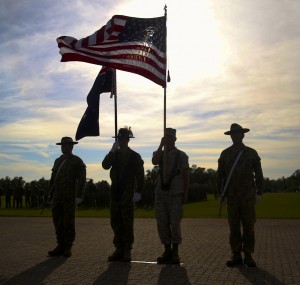2014-07-28 by Robbin Laird
In a recent article published by Leatherneck magazine, I have reviewed the nature of the distributed laydown mandated by the National Command Authority and the challenge of ensuring that a distributed force can work effectively organically, with the joint force and with allies.
The full article can be seen on the Leatherneck magazine website but I would like to highlight the main thrust of the impact of high demand for a distributed force:
The U.S. Marine Corps is in the throes of a significant shift in the Pacific in the disposition of its forces. Because two thirds of Marines are deployed to the Pacific, such a shift is a key event in shaping the Marine Corps stance in the decade ahead.

Just as the Marines are transitioning, so is the U.S. Air Force shifting toward a more flexible deployment stance as well.
That means that USAF lift is going to be dedicated increasingly to supporting the deployment of distributed airpower. That will enhance the importance of the U.S. Navy-Marine approach to sustainment with their own assets.
The demand to support distributed forces is rising and will require attention to be paid to the connectors, lifters and various support elements.
Part of that demand can be met as allies modernize their own support elements, such as Australia and Singapore adding new Airbus tankers which could be leveraged to support Marine Corps Ospreys as well as other aircraft.
Indeed, a key element of the distributed laydown of our forces in the Pacific is the fact that it is occurring as core allies in the region are reshaping and modernizing their forces as well as partners coming to the table who wish to work with and host USMC forces operating on a rotational basis with their forces. The military and political demands for the kind of forces that the Marines are developing also are what allies and partners want for their operations.
In turn, this drives up the importance of exercises in the Pacific with joint and coalition forces to shape new capabilities for the distributed force.
The distributed laydown, the evolution of the capabilities for distributed forces, the modernization of allied forces and the growing interest in a diversity of partners to work with the USMC are all part of shaping what might be called a deterrence-in-depth strategy to deal with the threats and challenges facing the United States and its allies in shaping a 21st-century approach to Pacific defense….
The demand on airlift is significant, and it’s clear from developments in the Pacific and new approaches like Special Purpose MAGTFs that KC-130Js need to be plussed up.
LtGen Robling underscored the nature of the challenge: “The demand signal goes up every year while the cost of using the lift goes up every year as well. This has me very concerned.
“The truth of the matter is the Asia Pacific region is 52 percent of the globe’s surface, and there are over 25,000 islands in the region. The distances and times necessary to respond to a crisis are significant. The size of the AOR [area of responsibility] is illustrated in part by the challenge of finding the missing Malaysian airliner.
“If you don’t have the inherent capability like the KC-130J aircraft to get your equipment and people into places rapidly, you can quickly become irrelevant. General Hawk Carlisle uses a term in his engagement strategy which is ‘places not bases.’
“America doesn’t want forward bases. This means you have to have the lift to get to places quickly, be able to operate in an expeditionary environment when you get there, and then leave when we are done.

“Strengthening our current partnerships and making new ones will go a long way in helping us be successful at this strategy,” the general added. “We have to be invited in before we can help. If you don’t have prepositioned equipment already in these countries, then you have to move it in somehow.
“And, right now, we’re moving in either via naval shipping, black-bottom shipping, or when we really need it there quickly, via KC-130J aircraft or available C-17 aircraft. Right now, we are the only force in the Pacific that can get to a crisis quickly, and the only force that operates as an integrated air, sea and ground organization.”
Allies see the Marines clearly on the right path, and that path is a powerful one.
But funding for the capabilities needed and the proper training will not happen by itself.
Amazingly, the USMC exercise budget is under regular attack.
The KC-130Js are not being procured in the numbers needed, and too many inside Washington, D.C., have not recognized what the evolution of a tilt-rotor-enabled ground force can be for 21st-century operations.
The Marines are innovators; however, they need support to turn those innovations into the combat realities the United States will need in the decade ahead.
https://www.mca-marines.org/leatherneck/2014/08
And for a flip book version of the article:
https://sldinfo.com/flipbooks/Distributed%20Laydown/DistributedLaydown/

